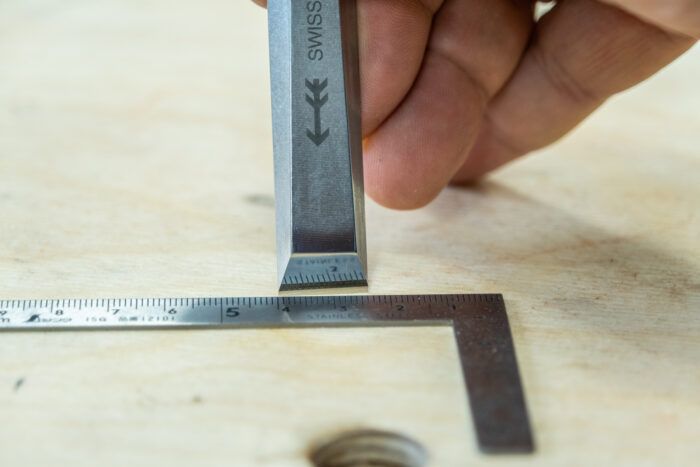How sharp is sharp?
Vic Tesolin is not a sharpener, he's a woodworker, so he doesn't bother going further with sharpening if it doesn’t warrant it.
There are many questions that I hear from new woodworkers when I teach:
Is it cheaper to make your own furniture?
Do I need a tablesaw to build furniture?
Can I leave my job and earn the same amount from woodworking?
The answers to all the above are a heartfelt “no,” by the way. However, the most common questions I get are around sharpening. Specifically, how do I know when my edge is sharp enough?
Now I know that I am wading into dangerous waters here. Discussing anything about sharpening in the light of day can be treacherous. I find that woodworkers are pretty easygoing about most things, but generally not when it comes to sharpening. In the following sentences I am not suggesting that you are doing anything wrong or that you need to change what you’re doing. I’m simply explaining my thoughts and experience on the subject. If you feel upset, then please close the browser window and walk away.
To my mind, the simple answer is: when it’s sharp enough to do the job. Not all my tools are sharpened to the same level. They are sharpened well enough for the task that they do. If I had to guess, I would say that my block plane is the sharpest simply by the nature of the work it has to do. End-grain work demands the most from a blade to get a clean cut. This is different from my Stanley No. 5 that is used as a scrub plane. It’s doing coarse work and doesn’t need to be nearly as sharp as the block plane.
My smoothing planes are generally much sharper than my scrub planes, again because of the nature of the work being done. A bit of tearout from a scrub plane is just fine by me, but when smoothing I want beautiful and lustrous surfaces. On the topic of chisels, my paring and bench chisels are all super-sharp, but my mortise chisels are not at the same level. Mortising with a chisel is helped along by a mallet, so it doesn’t need to be as sharp.
I used to use various stones, and now I use a Tormek* to sharpen the tools in my shop. If I require a mirror polish on my tools, then I will finish off with the leather wheel with some honing compound. The honing compound sits at 3 microns which suits me just fine. I’ve gone further than this, down to 0.5 microns, and from what I can tell, there are diminishing returns to going finer than 3 microns. I’m not a sharpener, I’m a woodworker, so I don’t bother going further with the sharpening if it doesn’t warrant it.
As I said in the beginning, this is just one woodworker’s thoughts on the subject. I sharpen because I must, not because I enjoy the process. I want to be at the sharpening station for as little time as possible so I can get back to the part of the craft that I do enjoy. All the surfaces that I get with my various tools work for me and I’m happy with them. I always say “in order to understand, you must do” so sharpen in a way that works for you. In the end, if you’re happy with the results you’re getting, then you need not worry about the “latest” this and the “gotta have” that. You can just do your thing and get back to the task at hand.
Until next time,
Vic
*Vic runs Vic Tesolin Woodworks, and is a Tormek dealer.


















Comments
Amen, Brother Vic. AMEN!
Thanks, this was helpful. I'm a maniac about my chisels and I never know when enough is enough
Agreed. I ask my students, "Is a butter knife sharp?" Answer - Yes, sharp enough to do its job.
Log in or create an account to post a comment.
Sign up Log in